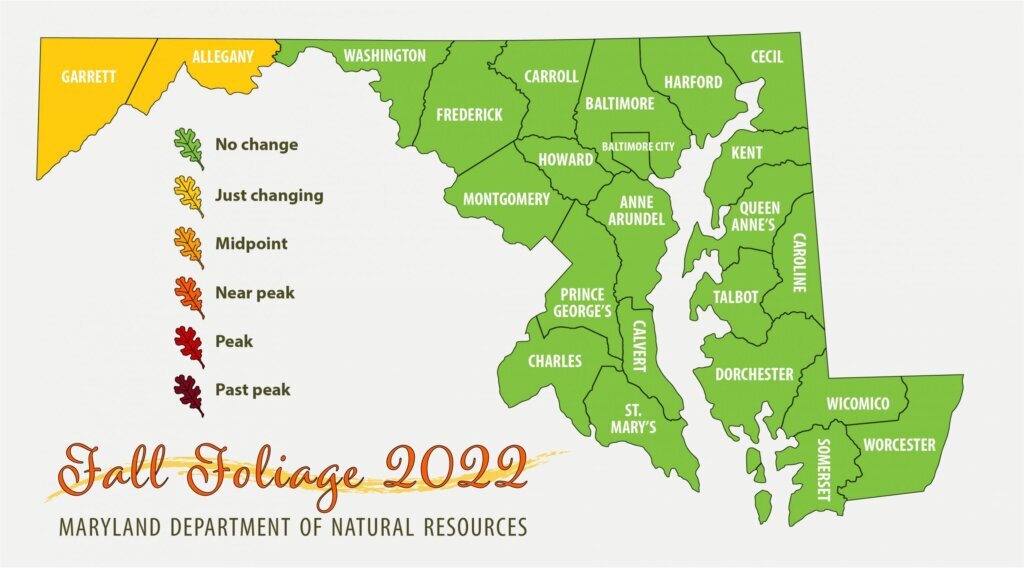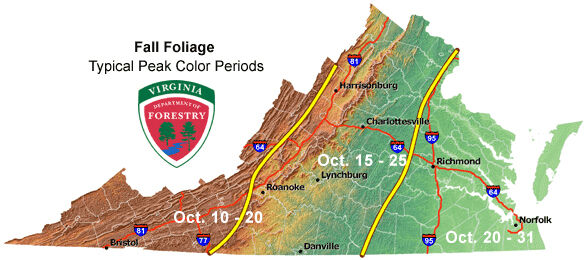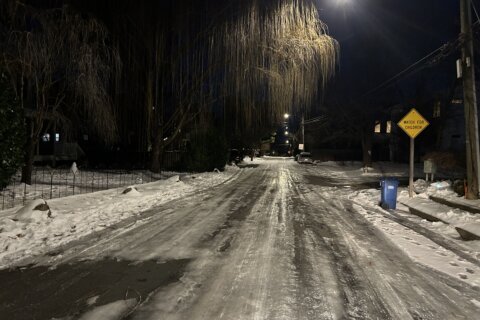It’s the point in the autumn season where leaf peepers dust off their cameras and plan trips to find the best fall foliage in Maryland and Virginia.
The color is starting to come alive in Western Maryland, and the upcoming pattern is the perfect recipe for vibrant foliage.
The latest report from the Maryland Department of Natural Resources indicates the sugar maples in the Potomac State Forest are displaying yellow, while the red maples are starting to emerge.
Garrett and Allegany counties are seeing these first signs of the autumn fall foliage season.
The highest ridges in Southwest Virginia are showing up to 10% fall color, including yellow buckeyes, red black gums and orange sugar maples.
Next up to see the fall colors start to change will be Interstate 81 to the Blue Ridge in early October. Historically, the best splash of color doesn’t arrive until late October in Northern Virginia, according to the Virginia Department of Forestry, and early in November for D.C.
What’s the forecast for fall color vibrancy this year?
Summer into early autumn has produced plentiful rain across the D.C. area, so trees are not stressed from recent dry weather.
Another factor that will bring out the best in fall color is the upcoming weather pattern.
Mild, sunny afternoons contrasted with cool, calm nights with lots of sunshine are the perfect recipe for trees to unleash the best colors of the fall season. Now, an unusual early-season cold snap that initiates a hard frost will cause leaves to wither and fall off early.
Under Canadian high pressure this week, the perfect fall foliage weather pattern is expected. Hurricane Ian’s rain will arrive in about a week, but there are no signs it will come with gusty winds.
While the rain will cause some leaves to drop, much of the foliage will still remain intact in the Allegheny Mountains in West Virginia and eventually later this week in the Blue Ridge.
What pattern drives a not-so-great foliage season?
Fall colors can be dulled and less “pretty” following a dry summer into early fall. Drought adds stress to trees, causing leaves to turn early and then fall off ahead of schedule.
A warm, cloudy and soggy autumn pattern doesn’t help either. Leaves tend to showcase less color during such a pattern.
Simply by default with less sunshine and cooler temperatures in the autumn season, leaves stop their food-making process. Chlorophyll breaks down, the natural, green leaf color disappears and other pigments embedded within leaves become visible.
Those watching the leaves change shouldn’t be surprised to see varying colors on one tree. Exposure to sun can turn leaves red, while those leaves in the shade may become yellow.










